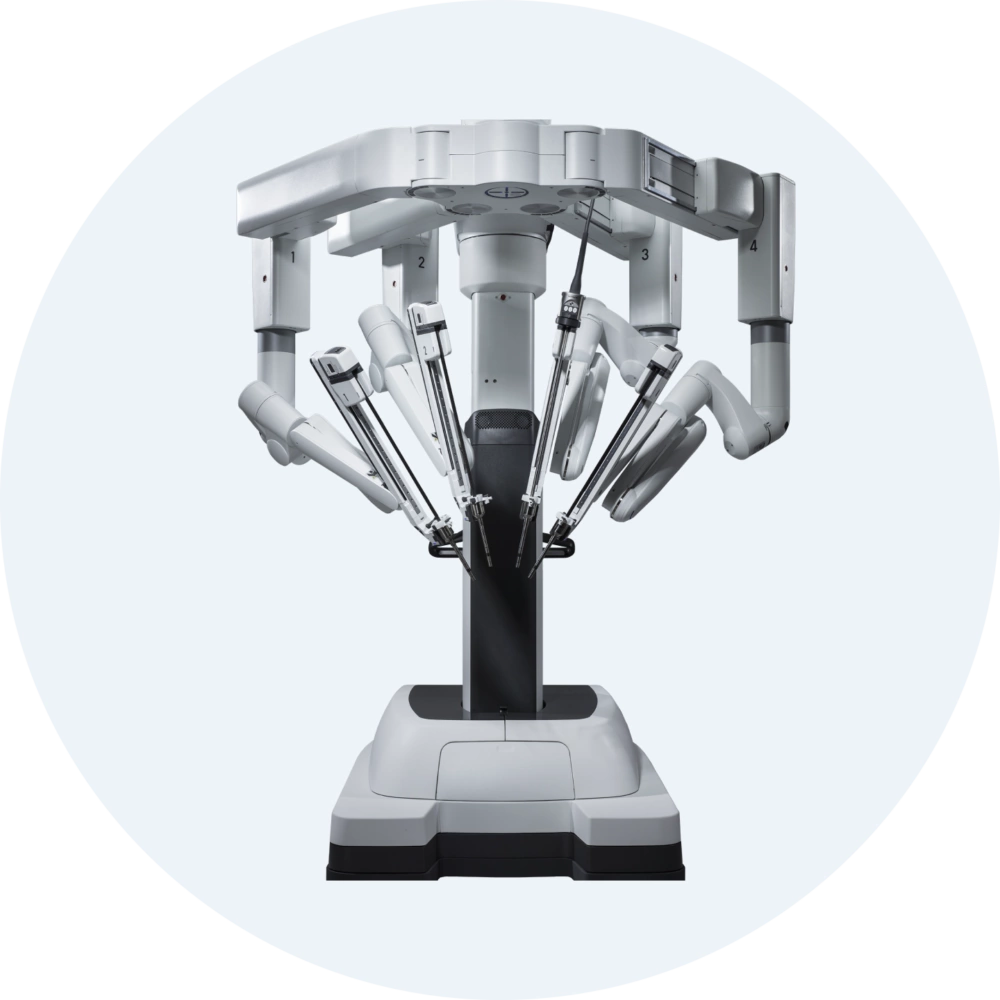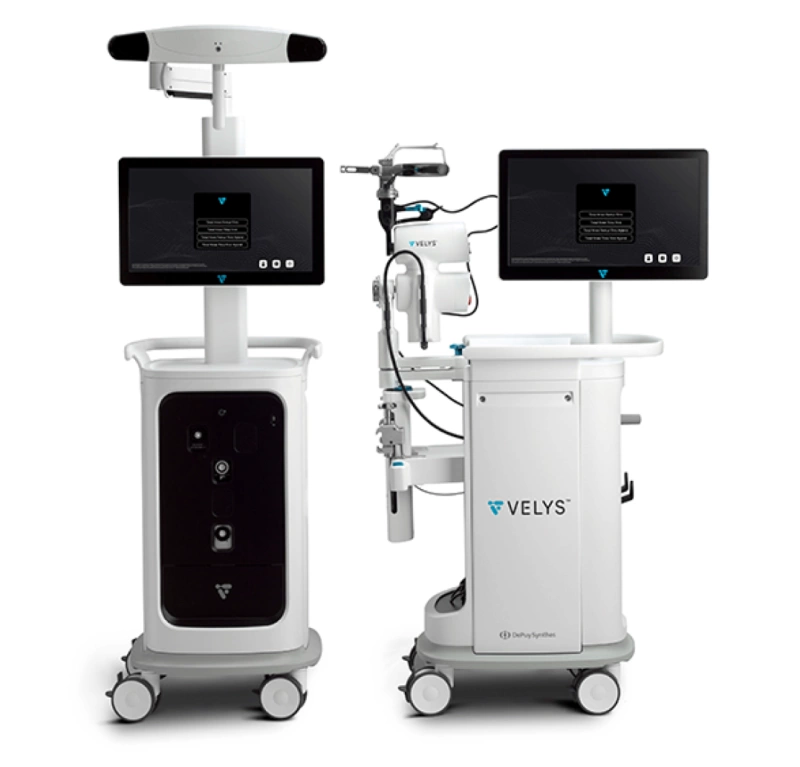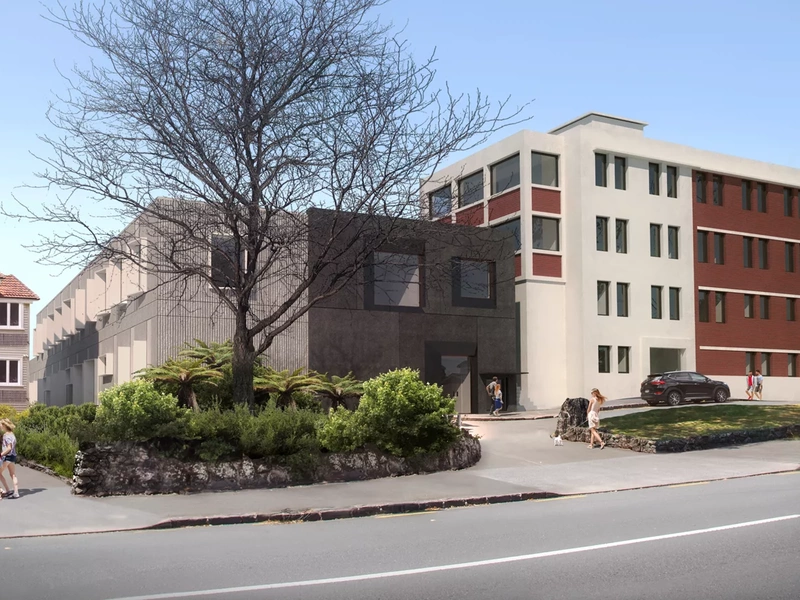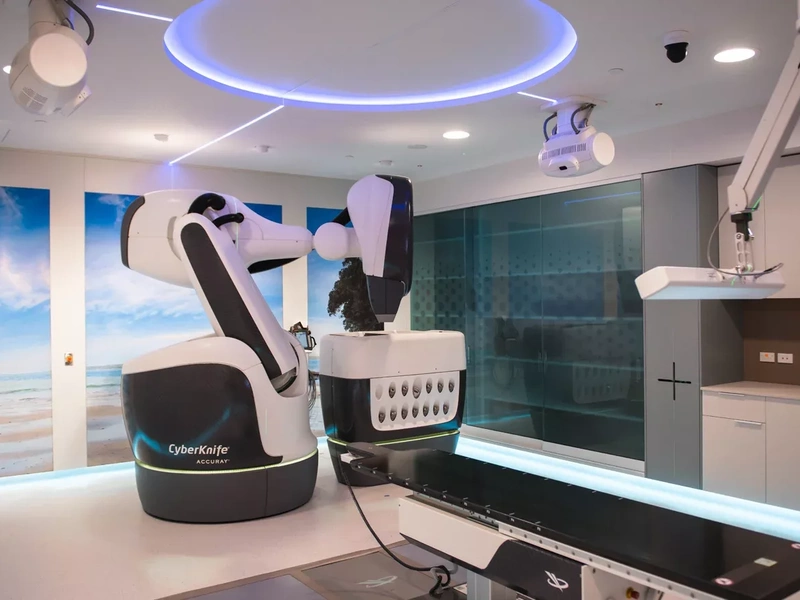We invest in the latest robotic technologies to deliver world-class healthcare experiences for every patient.

Robotic-assisted surgery is fast becoming a preferred option for patients having certain surgical procedures, and our leading robotically-trained surgeons are supported by highly-trained anaesthetists and clinical teams.
Robotic surgery, also called robotic-assisted surgery, allows surgeons to perform delicate and complex procedures with more precision, flexibility and control.
The benefits for patients can include a shorter hospital stay, a faster recovery time, reduction in blood loss and pain, reduced risk of complications, and smaller and less noticeable scars.1
We have invested in two orthopaedic robots - the VELYSTM Robotic Assisted Solution and the ROSA® Robotic Surgical Assistant - which are used by robotically-trained surgeons at both Allevia Epsom Hospital and Allevia Ascot Hospital for total knee replacement surgeries.
We also have a third robot - the da Vinci Xi Surgical System - which is used by our robotically-trained urology and gynaecology surgeons, including for patients with prostate cancer. The da Vinci is used for minimally invasive surgery where procedures are performed through small incisions.
Orthopaedic robots

VELYS™ Robotic-Assisted Solution
Read more
Read more
A leading orthopaedic knee specialist who operates at Allevia Hospitals, worked closely with DePuy Synthes on the development of the robotic-assisted solution, including using the technology for the first time in the world at Allevia Hospital Ascot in Remuera.
The VELYS is an exciting new development for a number of reasons.
- It is a first-of-its-kind table-mounted solution, with an efficient design that integrates into any operating room.
- The system adapts to the surgeon's workflow, is designed to give them the control they are used to, and helps them execute accurate bony cuts.2
- Every knee is different, and it allows the surgeon to individualise the total knee joint replacement to match the variable bony anatomy and soft tissue envelope of the patient's knee. This patient-specific technique enables the surgeon to tailor the alignment of the knee replacement to the patient's anatomy.
- It works exclusively with the ATTUNE Knee System, which studies have shown can improve clinical outcomes and patient-reported outcomes, as well as contribute to a shorter length of stay in hospital.2, 3, 4, 5

ROSA Robotic Surgical Assistant
Read more
Read more
- The surgical procedure using the ROSA Knee is similar to traditional total knee replacement, but with a robotic assistant that personalises the surgical approach for the patient's unique anatomy.
- During the procedure, ROSA Knee utilises a camera and optical trackers attached to the leg to know exactly where the knee is in space. If the leg moves even a fraction of an inch, the robot can tell and adjusts accordingly.
- Throughout the surgery, ROSA Knee provides the surgeon with data. This information, combined with the surgeon's skill, helps them know how to position the implant based on the patient's unique anatomy.
- Unlike traditional knee replacement methods, with ROSA Knee a series of x-rays may be used to create a three-dimensional (3D) model of the patient's knee anatomy. This 3D model enables the surgeon to plan the specifics of the knee replacement prior to the surgery taking place.
Urology & gynaecology surgical system

Da Vinci Xi Surgical System
Read more
Read more
- The da Vinci system allows surgeons to skilfully perform surgical procedures through tiny incisions.
- Guided by magnified, high-definition images, the surgeon controls small robotic arms that can bend and rotate in ways the human hand cannot, providing greater dexterity, control, precision and vision.
- The system is so precise that the instruments recheck their position by computer 1,500 times per second.
References
- Robotic surgery. Mayo Clinic Health System 2018-2022. Last accessed July 2022.
- Doan G, Curtis P, Wyss J, Clary C. Resection Accuracy Improved during Robotic-Assisted Total Knee Arthroplasty – a Cadaveric Study. Internal Report 103720852
- Hamilton W, Brenkel I, Barnett S, et al. Comparison of P.F.C. SIGMA to ATTUNE: A Prospective, Multicenter Study. Podium Presentation at the Closed Meeting of the Knee Society, Sept 2018, St Louis, MO, USA. 2018.
- Fisher D, Parkin D. Optimizing the Value of Your Patients’ TKA: How to Leverage Data from Patient Reported Outcomes, Becker’s Hospital Review, webinar recording, Oct 2019, www.ATTUNEevidence.com/clinical-evidence, last accessed 10-18-19.
- Ranawat CS, White PB, West S, Ranawat AS. Clinical and Radiographic Results of ATTUNE and PFC SIGMA Knee Designs at 2-Year Follow-Up: A Prospective Matched-Pair Analysis. J Arthroplasty 2017; 32:431-6.
- Statement based on x-ray based imaging imageless case option, and reduced instrumentation through pre-operative imaging.
- Parratte, S., et al. Accuracy of New Robotically-assisted Technique for Total Knee Arthroplasty: A Cadaveric Study. The Journal of Arthroplasty. 2019, 34(11): 2799-2803.





